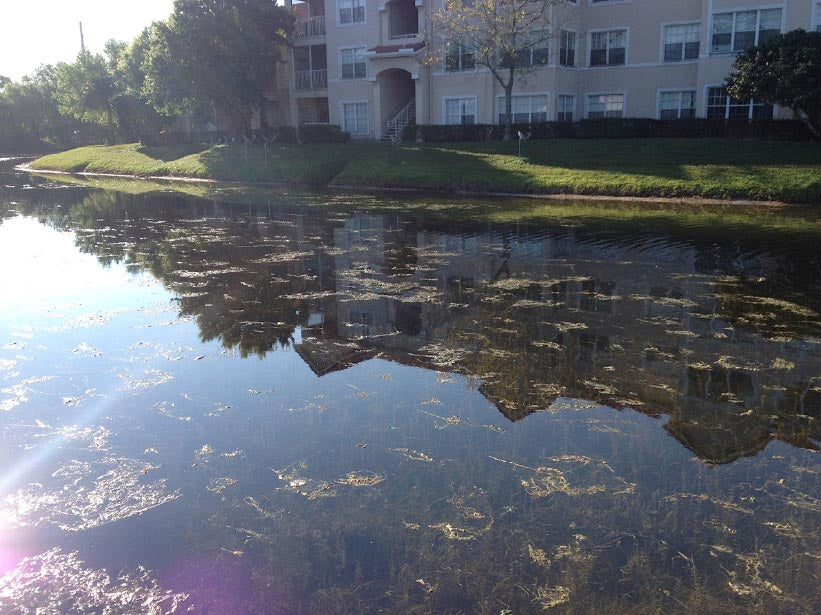
When Is Algae Bad for My Lake’s Ecosystem?
Algae control in lakes is a major concern. But, not all algae is bad; in fact, when it is kept in balance with the rest of the lake’s ecosystem, it is essential. So, how do you know when you’re in need of lake algae control measures, and when you should leave well enough alone? There are two main reasons why you may need chemical or natural algae control in lakes.
Toxic Algae Species
The color of algae can indicate whether to begin lake algae control methods. Blue-green algal blooms, when left unchecked, can create a toxic build-up in lake water. This can be detrimental to fish and other wildlife, who can die from high toxic levels. If you notice blue-green colored algal blooms, you should at a minimum try to determine the species, and may want to add some algaecide to the lake. pond boss® PRO Algaecide/Bactericide treats algae but is safe for fish, plants, and other lake inhabitants.
Overgrown Algae
When algae are noticeable on a lake’s surface, it’s probably time for you to break out the algaecide. Not only will the algae compete with other lake plants for nutrients, but, as it floats on the surface of the water, it shades the plants below and prevents them from using sunlight to photosynthesize.
This kind of overgrown algae is also detrimental to the fish in your lake.The large blooms of algae will eventually die, and as they decompose, they draw oxygen out of the water. Fish will quickly weaken and die without properly oxygenated water.
Natural Algae Control in Lakes
As mentioned, algaecide is a quick and easy way to handle unwanted algal growth. But there are ways you can prevent the problem altogether. Adding the right kinds of bacteria to the lake, using barley straw, and adding a vegetation buffer around the shoreline are all natural ways of lake algae control.
Another way to help control algae growth is by using surface and subsurface aeration. It boosts beneficial bacteria and keeps the water oxygenated for the fish and plants.


